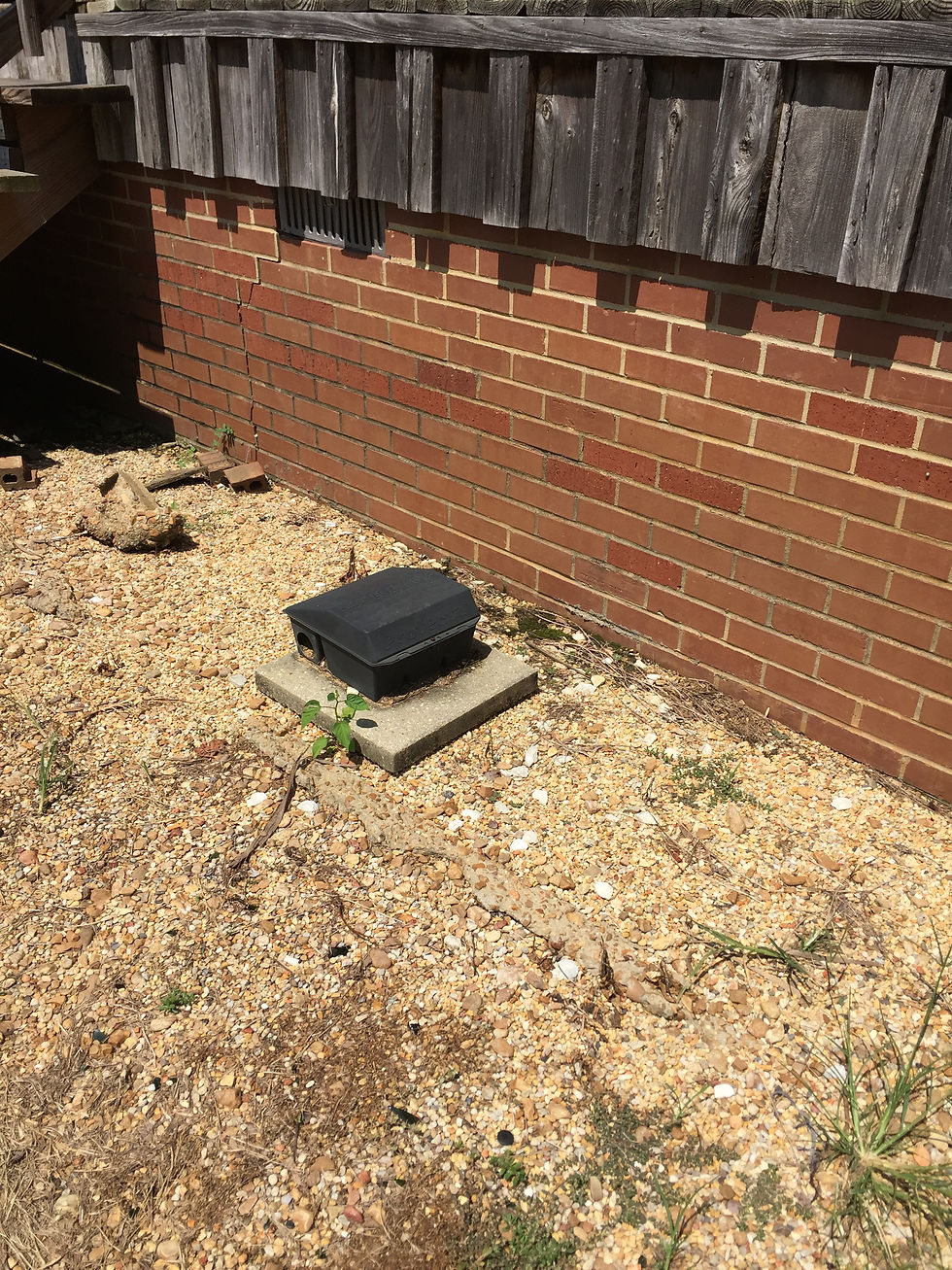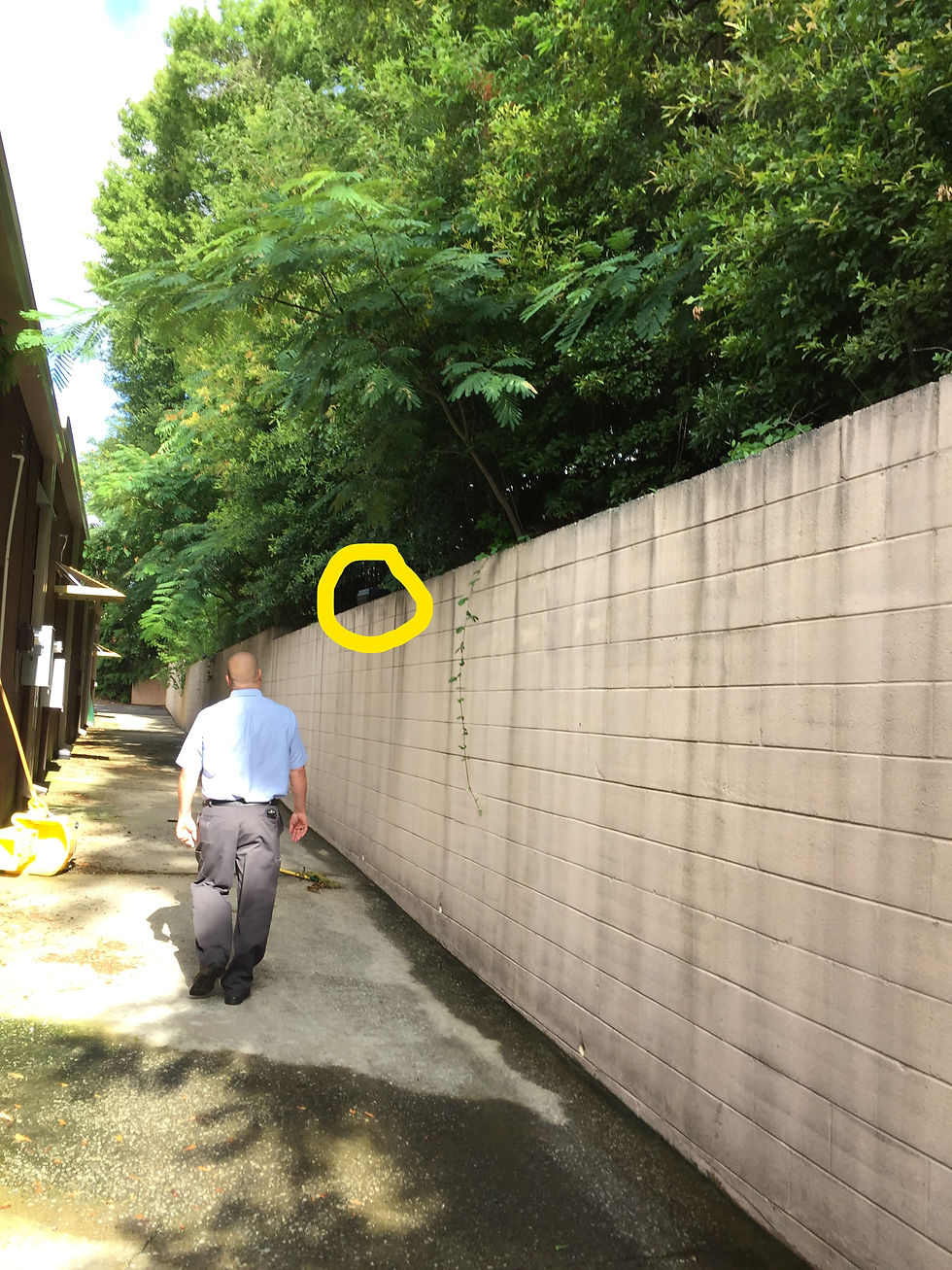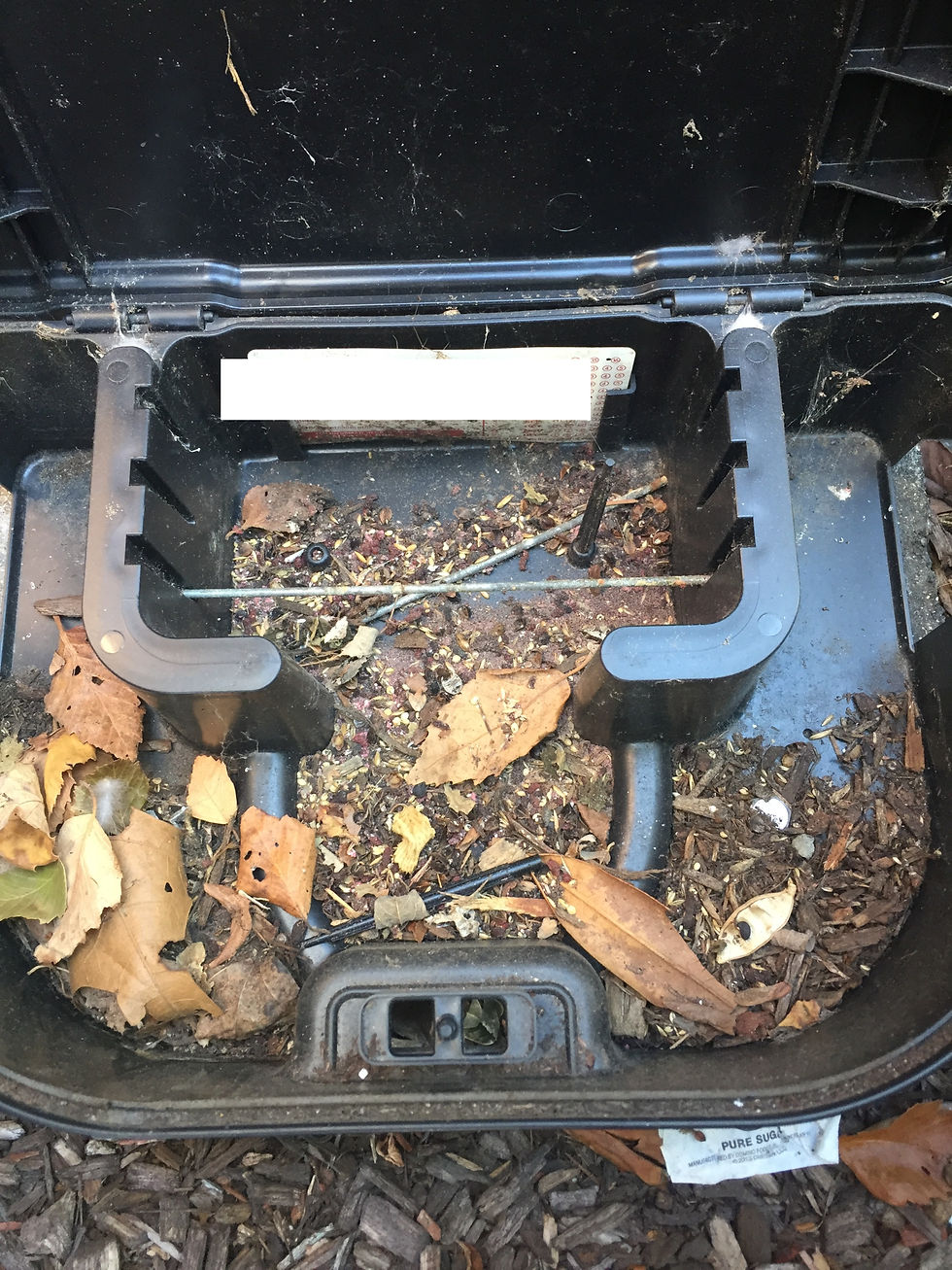Rise to the Bait (AKA: Clickbait!)
- Chelle Hartzer

- Sep 7, 2021
- 3 min read
I’ve got an upcoming presentation on rodents, which means I have more than 40 open tabs on my browser with all kinds of rodent related info and at least two open search pages to get more. Somehow I’m going to bring all of this together into something coherent and informative… at least that’s the plan. Until then, I do have rodents on the brain. And on a recent trip, just last week, I had to stop and take a picture of this.

I see it quite often: a rodent station, bait station or trap, out of place. This means it isn’t working effectively. Or working at all really. Bait stations in particular are important because we want to start managing the rodents on the outside, before they can get into structures and wreak havoc.
Fish or Cut Bait

It happens that bait stations get moved out of place sometimes. Maybe someone used it as a door prop (seriously, stop it), or a forklift clipped it (were they aiming?), or an animal dragged it away (I’ve seen it happen). I hear it a lot: the station was in place when I left, it keeps getting moved. If it keeps getting moved week after week, month after month, is that really the best place for it? There are many places that we ideally want to put bait stations, but realistically it may not be a good idea. Placing a station in a less than ideal position is often much better than putting a station in a “good” spot when it’s not going to stay there. It’s better to allow even a few rodents to access a bait station than to have no rodents access a station because they can’t get to it. Do it right or give up … on that particular location.
Bait and Switch
Pest control professionals have gotten very good with rotating their cockroach and ant baits because they know that resistance can develop and those baits can stop being effective. However, when was the last time the rodent bait was changed to a new active ingredient? Warfarin was the first anticoagulant rodenticide, and because of its immediate and widespread use, rodents quickly developed resistance and the bait stopped working. When a bait stops working, rodent populations rapidly increase and problems ensue. Check your baiting program and make sure that rodent baits are rotated on a regular basis.

Jailbait
How many times can it be said that the label is the law? READ THE LABEL! And then, of course, follow the label! Using rodent baits properly ensures the safety of people and non-target organisms. It also ensures the target rodents get the bait as intended. Currently, rodenticide labels (in the US) state bait has to be within 100 ft. of a man-made structure. This is where we want to control rodents, up against buildings to reduce their populations and prevent them from coming in. Using baits and not following the label means not using them effectively as well as not using them legally. And there are repercussions.
Take the Bait
It’s not just about the rodents eating the bait. It’s also about monitoring how much, how often, and where rodents are taking the bait. Whether you have hundreds of bait stations around a large facility or just a handful around a small site, tracking this information can provide important data. This data can be used to proactively address rodent issues. If it’s known that feeding is suddenly increasing on a particular station, inspections can focus on that area, underlying conducive conditions identified, and additional measures put in place. The reverse is also true. If rodent activity is consistently low, stations can be relocated to other areas and inspections can focus on other locations. Ultimately, it’s always better to deal with an introduction than an infestation, and using monitoring data can identify introductions.

I was at a site last week and stations were not located in good places, were not positioned correctly, and probably hadn’t had a bait changed in years. Even worse, most stations didn’t even have bait in them. Fishing without bait is rather unproductive. Rodent stations without bait aren’t going to control any rodents.
Is your plan working well and proactively? Do you know when the last time the bait was switched? We can help, contact us here (we are waiting with baited breath)!








Comments